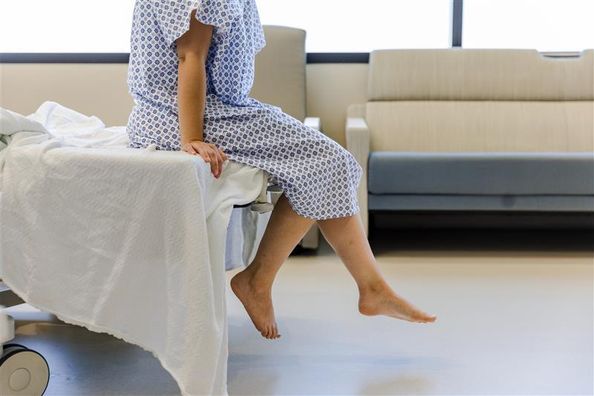At The South Bend Clinic, we know that breast cancer can bring up a lot of questions, especially when it comes to screening and understanding your risk. To help clear things up, we’ve gathered answers to some of the most common concerns.
1. When should I start getting mammograms?
For most women, annual mammograms are recommended starting at age 40. If you have a family history of breast cancer or other risk factors, your doctor may suggest beginning earlier.
2. How often should I do a self-breast exam?
Women of all ages are encouraged to do self-breast exams once a month. If you’re still menstruating, it’s best to do the exam a few days after your period ends. For post-menopausal women, pick a consistent day each month, like the 1st or 15th, to check in.
While mammograms can catch cancer before a lump is noticeable, self-breast exams help you get familiar with how your breasts usually look and feel, so you can spot any changes early.
3. How do you perform a self-breast exam?
Self-breast exams let you stay in tune with your body and notice any changes more quickly, even though mammograms are designed to detect cancer before you can feel it. Here are a few tips on how you can perform a self-breast exam:
In the Shower:
Using flat fingers, gently move them across your entire breast area, from your collarbone to your abdomen and from your armpit to your cleavage. Feel for any unusual lumps, thick spots, or areas that feel different than usual.
In Front of a Mirror:
Stand tall with your arms at your sides and check for any changes in the size, shape, or skin texture of your breasts, like dimpling or redness. Then, raise your arms and take another look. It’s also a good idea to gently squeeze each nipple to check for any discharge, whether clear, milky, or bloody.
Lying Down:
When you lie down, your breast tissue spreads out evenly, making it easier to feel for any changes. Place a pillow under your right shoulder and rest your right arm behind your head. With your left hand, use small circular motions to gently feel your entire breast, applying different pressure to check both the surface and deeper tissue. Then, switch sides and repeat for your left breast.
4. What are the biggest risk factors for developing breast cancer?
Common risk factors include:
- Age: The risk of breast cancer goes up as you get older.
- Family History: Having close relatives with breast cancer increases your risk.
- Genetic Mutations: Inherited mutations, like BRCA1 and BRCA2, can significantly raise your chances of developing breast cancer.
- Hormonal Factors: Long-term exposure to estrogen, such as starting your period early or going through menopause late, can increase your risk. Keep in mind, full-term pregnancies and lactation are associated with reduced risk.
- Lifestyle Choices: Smoking, drinking heavily, and not getting enough exercise also contribute to a higher risk.
5. Does having a family history of breast cancer mean I’m definitely going to get it?
No, it doesn’t guarantee you’ll get breast cancer, but it does increase your risk. Genetic testing can help show if you carry mutations, like the BRCA gene, that could raise your risk even more.
6. Can I lower my risk of breast cancer?
While you can’t control certain risk factors like age or genetics, there are things you can do to lower your risk. You can reduce your chances by:
- Maintaining a healthy weight
- Exercising regularly
- Limiting alcohol consumption
- Quitting smoking
- Eating a nutrient-rich diet
7. Are mammograms safe, and how often should I get them?
Mammograms use low-dose X‑rays and are safe for regular screenings. For women aged 40 and up, it’s usually recommended to get a mammogram every year. Keep in mind that your doctor may adjust this based on your individual risk factors.
8. What should I do if my mammogram shows abnormal results?
An abnormal mammogram doesn’t automatically mean cancer! Sometimes, it just means that further imaging or a biopsy is needed for a closer look. Stay positive, and don’t hesitate to reach out to your doctor to discuss the next steps.
By staying informed and proactive, you can take important steps toward protecting your health. Schedule your annual mammogram appointment today. The South Bend Clinic is here to guide you every step of the way.
Health Topics:



